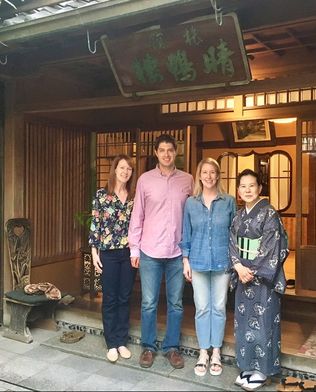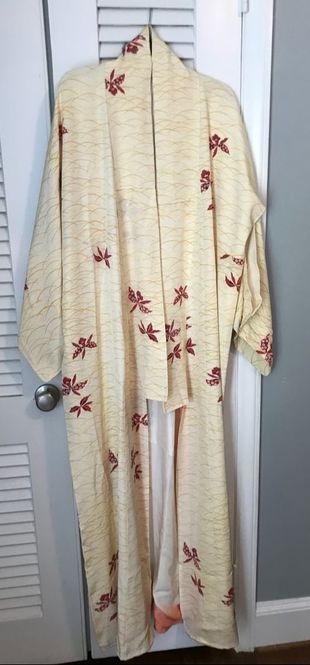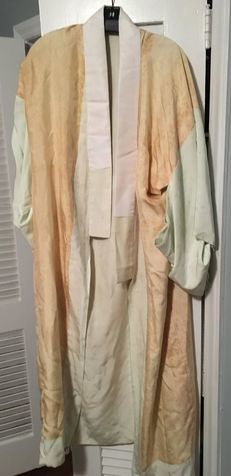|
June 2018 celebrates the one year anniversary of my last trip to Japan as well as the creation of this website. I visited Osaka, Kyoto, Nara, and Tokyo with my fiance (Ashley) and her mother in June 2017. My fiance's mother was living in Iwakuni, Japan at the time and meet us in Osaka to start the trip. I cannot recommend getting off a 13 hour plane and then taking a train ride from Tokyo to Osaka in the same day. We had a wonderful trip, new experiences, and learned much about each other. Traveling with others and traveling solo can create completely different experiences. As a male, it can be quite challenging sharing a bedroom and bathroom with two females for over a week. I wrote a journal chronicling our journey (as I also did on my first trip) and sent daily emails out to friends and family. The positive feedback I received from readers is what inspired me to share my knowledge and experiences with others. Moving forward into the next year of writing, I will expand topics by touching more on what Japanese culture means to me. Starting in July, I plan to go deeper into the emotional connections with Japanese culture and how it has continuously inspired me since 2004. I hope you continue to join me on this adventure as we cross into the second half of the year. Kimonos are Japanese formal attire worn during ceremonies, festivals, weddings, and other special occasions. They are generally made with wool, silk, and other fine materials. Kimonos are heavier in weight than yukatas and contain a lining. They are usually custom made for an individual and come in multiple styles. Women have a few footwear options with a kimono. Men typically wear tabi socks along with multiple footwear options as well. There are a number of accessories necessary for wearing a kimono such as a juban and obi belt. Descriptions of the different parts of a kimono are available here.  Where to Buy a Kimono New kimonos are typically custom made for an individual and can cost hundreds to thousands of dollars. However, used kimonos sell for unbelievably low prices in Japan. For example, the male kimono and obi pictured was under $60 together. The domestic demand for used kimonos is extremely low, but there is a decent demand from tourists. You can find used kimonos available at second-hand shops ranging in styles, colors, sizes, and prices. These shops are generally located near popular tourist spots. There are also a number of online outlets that sell kimonos with a variety of options . Yukatas are Japanese kimonos made of cotton and other lightweight materials. They do not include a interior lining like regular kimonos. This makes them breathable and great for warmer temperatures. Yukatas are worn by men and women. They are worn for summer festivals, special events, and ceremonies. Sandals are the preferred footwear with yukatas. They are also quite popular in the modern fashion world. Woman are wearing traditional and non-traditional styles as a statement piece in multiple ways. Where to Buy a Yukata Yukatas are relatively affordable and make a great souvenir or gift. There are plenty of boutiques, department stores, and other retailers selling yukatas. You can also find second-hand shops selling them at discount prices. When purchasing one in Japan, pay particular attention to the length of the garment. You do not want to buy one that is too short; especially, if you are tall. Clothing in Japan runs smaller than what you would find in the United States. If you are a tall male, it can be difficult finding larger sizes that fit correctly. There are multiple online stores that sell affordable yukatas in many styles, patterns, and sizes. You will want to purchase a obi (sash for tying a yukata) as well. How to Wear a Yukata Yukatas are worn in the same way as a kimono. The most important part of wearing them is to wrap the left side over the right and use a obi to tie it securely. Tying an obi into a bow can be a little challenging. Here is a video for women that can assist with putting on a yukata. If you are looking for assistance with putting on a male yukata, this step-by-step guide offers simple instructions. Nara, Japan is a wonderful place to visit that is full of rich culture, history, and activities. It is a great place to visit for a day trip away from the larger cities of Kyoto and Osaka. There are a number of temples, parks, restaurants, shops, and other places to visit that will fill up an entire day. Best of all, Nara is easily accessible if you are staying in Kyoto or Osaka. How to Reach Nara by Rail Line from Osaka If you are staying in Osaka, you can travel by rail to Nara in less than an hour. There are two rail lines that connect to Nara from Osaka. If you have an active JR Pass, the Yamatoji Rapid Service from Osaka Station is free and under an hour to reach your destination. However, it will drop you off further away from the main tourist attractions. The other method to reach Nara is by using the Kintetsu Nara Line from Namba Station. The Rapid Express version is half the price of the Limited Express and only about five minutes slower. This is the recommended route to reach Nara as it will drop you off in an ideal location to explore the area. How to Reach Nara by Rail Line from Kyoto There are two rail line options departing from Kyoto Station. Using an active JR Pass, you can take the Miyakoji Rapid Service for free and arrive in about 45 minutes. The other option is the Kintetsu Nara Line. Like Osaka's Namba Station, the Rapid Express train will take about 50 minutes and is half the price of the Limited Express train. If you want to save about 15 minutes or the departure time is more convenient, the Limited Express train is a better option. Recommended Activities for a Day Trip to Nara One of the top attractions in Nara is Todai-ji Temple. The main hall is the world's largest wooden structure that houses a large statue of Buddha along with other statues. On your way to Todai-ji Temple, stop by Nara Park for a quick visit with the local deer. Another area to explore surrounds Kofuku-ji Temple. There are multiple shops, restaurants, and even an owl cafe. Mentouan, a restaurant famous for its udon noodles, is a popular destination. Just look for a line of people on the corner of Sanjo Dori. Some other places of interest are the Nara National Museum, and Isuien Garden. |
Follow me
on Instagram @card_knock_life Categories
All
Archives
July 2024
This website contains affiliate links
|








 RSS Feed
RSS Feed
